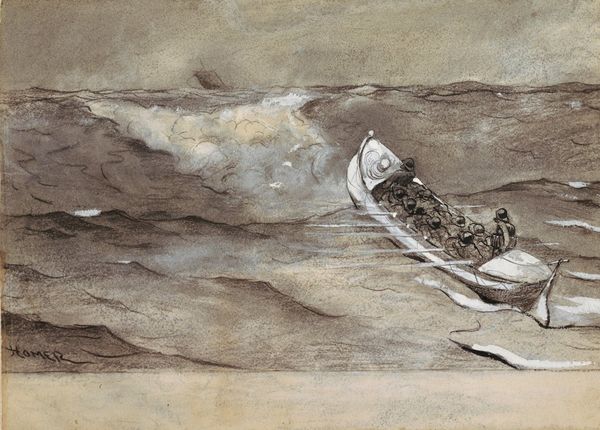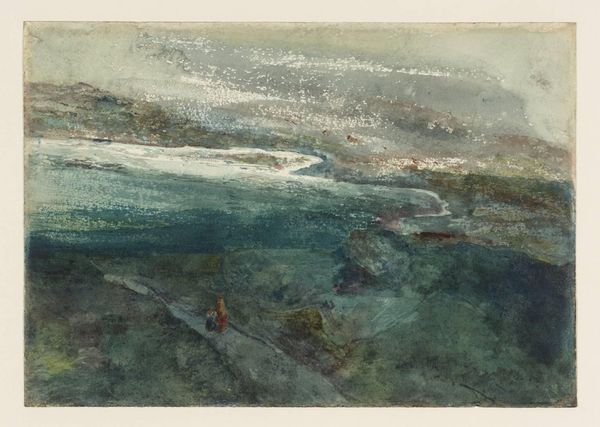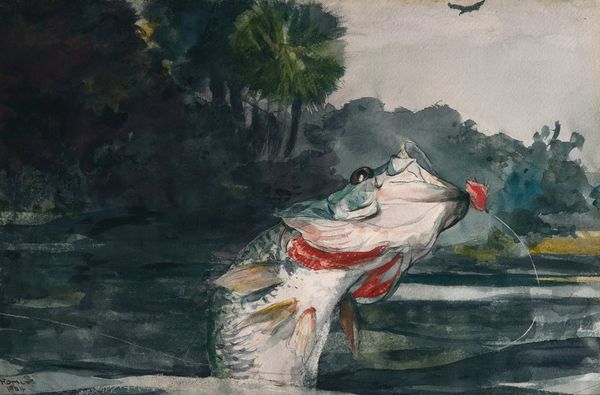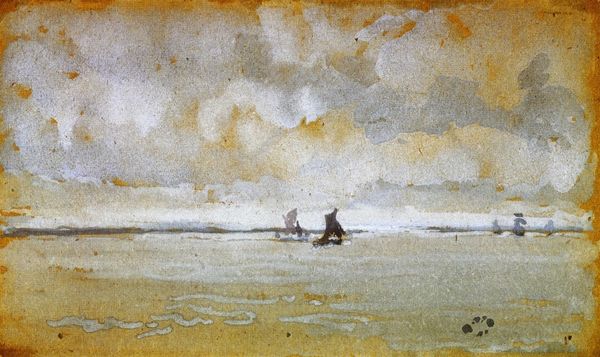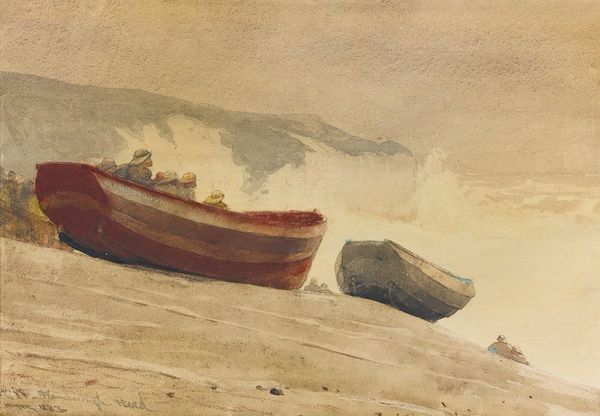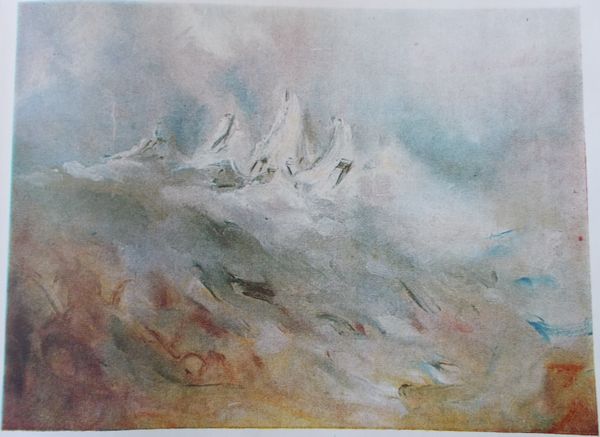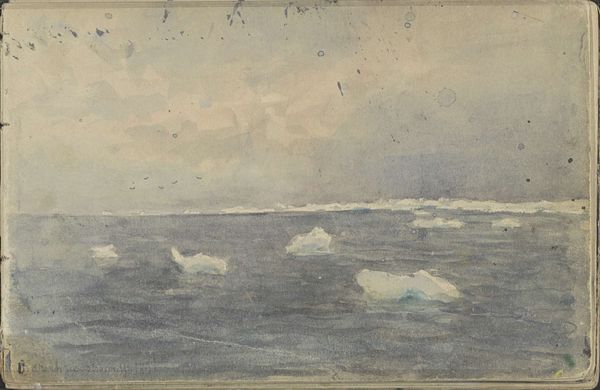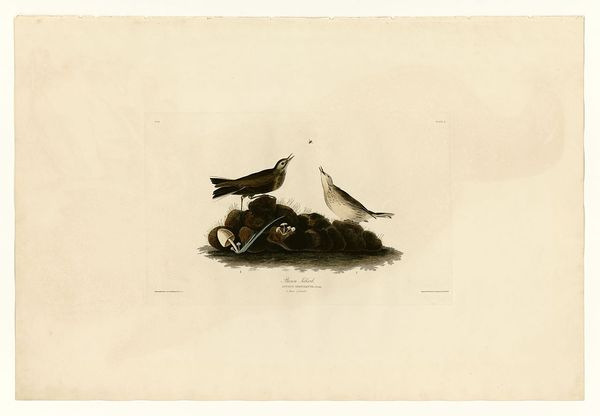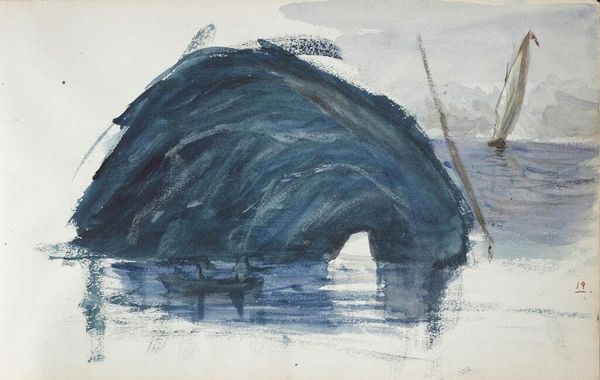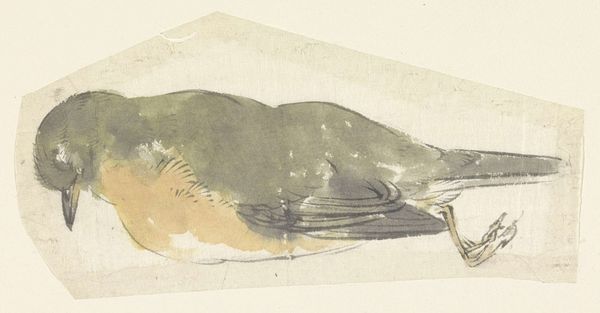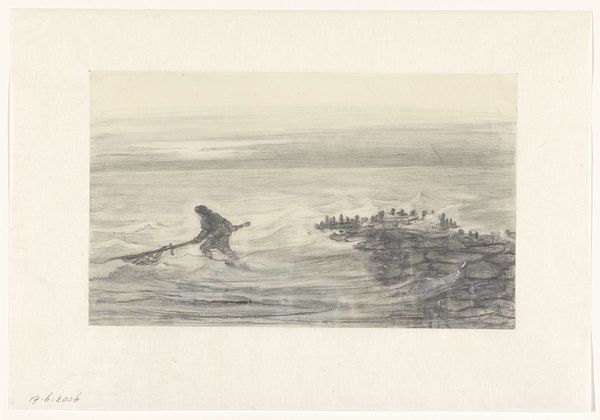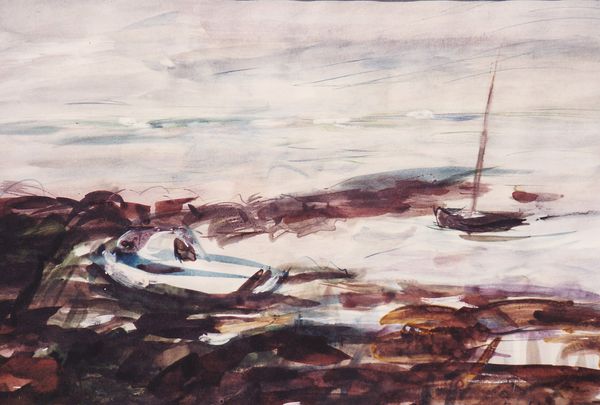
Copyright: Public Domain: Artvee
Winslow Homer created this watercolor painting titled, "Pike, Lake St. John," around 1895 in the United States. The image depicts a large pike leaping out of the water in front of a canoe carrying three men. In the background, a distant shoreline and steamboat are visible. The image represents America's growing leisure culture. During the late 19th century, a rising middle class had more time and money for recreational activities such as fishing and travel, and locales such as Lake St. John became popular tourist destinations. What are the power dynamics at play in the image of men hunting a fish in the wilderness? Homer was interested in the relationship between humans and nature. His images are often interpreted as celebrations of nature's beauty and power. This painting prompts reflection on how the act of representing nature in art also reflects our own values and assumptions. Studying the artist's biography, the social history of American tourism, and the cultural symbolism of fishing can all offer a greater understanding of the artwork.
Comments
No comments
Be the first to comment and join the conversation on the ultimate creative platform.
